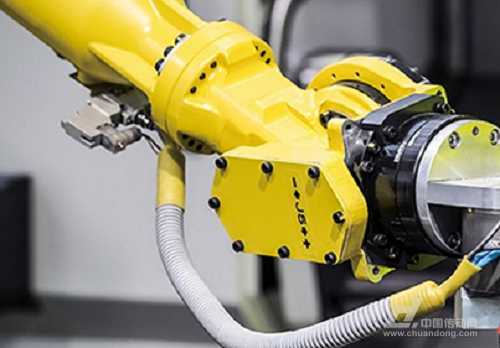FANUC was originally the computer numerical control department of the Fujitsu Group. After independence in 1972, it specialized in the manufacture of industrial robots and built automation systems and equipment for customers. It is now the number one manufacturer of numerical control systems in the world. It has been described that FANUC is like "Microsoft at the foot of Mount Fuji." It is a model made in Japan. Once Fujia volcano erupts and spreads to Fanuc, factories around the world may cease to operate.

Robot production robot, unmanned factory outpost
And such a smart robot company, in the supply chain of Industry 4.0 related service providers, must not only provide such a role as a cooperative robot.
In fact, FANUC is the first company in the world to produce robots using robots. FANUC's robotic system (RobotCell) is introduced at its Yamanashi plant. It does not stop working 24 hours a day, seven days a week. Its robot has evolved into a program that requires no manual input. , under no supervision.
Robots at work
Brooks had predicted that the development of collaborative robots was similar to that of large-scale computer mainframes in the early days. Initial sales were sluggish, but as medium-sized and small-sized models were successively launched, the prices were getting cheaper and computer sales began to increase exponentially. Cooperative robots will also welcome this day.
The Goldman Sachs report analyzed that the price of small robots in 2016 was already lower than the annual salary of a Shanghai assembly line assembly worker, symbolizing that robots' selling prices come to the sweet spot. In 2018, China’s demand for industrial robots will reach 150,000.
When the robot is cheaper and cheaper, the definition of the robot is also reversed. It is no longer confined to “robots†that are similar in appearance to the human body. It is combined with electronics, power, and machinery to automate assembly analysis, operation, or AI functions. equipment.
Through cooperative robot software, multiple robots in the team can be synchronized and divided and work together. At present, KUKA technology can realize the cooperation of four robots at most, and is mostly used in industries such as automobile manufacturing, metal processing, and glass, and is responsible for tasks such as handling, assembly, disassembly, and painting.
The KUKA robot engineer at the remote end will first set the program coordinate point through the simulation software, and then finally go to the factory site for correction and testing to improve the efficiency of the operation process.
In order to avoid the dangers that may occur when human-computer contact occurs, the cooperative robots have built-in sensors, or they will put on a layer of ultra-sensitive "skins" first. As long as the force is less than 10 newtons (equivalent to about 1 kg), it is very light. Collisions can be sensed and make the robot.
Smart industrial robot
Bai Zhongzhe said that the modern factory is divided into a professional division of labor, a large amount of standardization, and man-machine collaboration, and continues to move toward flexible and customized production, stepping toward unmanned factories. The important roles include smart machines, industrial robots, and digital information integration systems. The role of the people is changed from the operator to the monitoring and teaching of smart machines.
Photographic Lamp,Best Led Flood Light,Led Security Flood Light,Commercial Led Flood Lights
SHAOXING SHANGYU FEIXIANG PHOTOGRAPHIC CO.,LTD , https://www.flying-photography.com